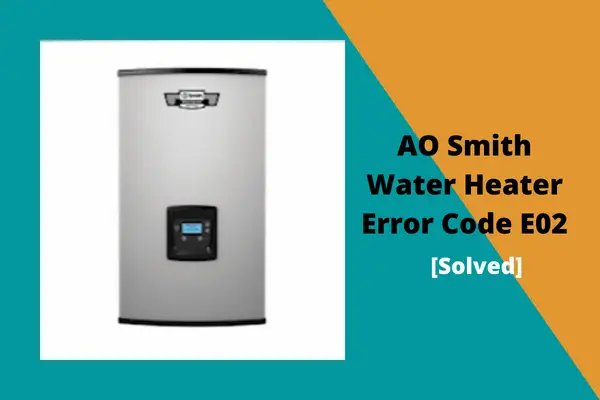
The “LE” error code on your A.O. Smith water heater typically signifies a leakage issue. It’s like a warning light on your car dashboard telling you that something’s not quite right. It’s not just an inconvenience; it might be a sign of a more serious problem that needs your attention. Ignoring it would be like driving with a flat tire — risky and potentially damaging. So, let’s explore why this error occurs and what you can do about it.
Understanding the “LE” Error Code
First, what exactly does the “LE” error code indicate? At its core, it points to a potential leakage issue in your water heater system. Think of your water heater as a giant teapot. If there’s a crack or a hole, even the tiniest one, water starts seeping out, leading to inefficiencies and potential damage.
This leakage is often due to wear and tear on internal components like pipes, joints, or the tank itself. Imagine it as a garden hose with a small tear — water doesn’t flow as it should, and pressure drops. Similarly, in your water heater, such leaks can lead to insufficient heating, increased energy consumption, and even water damage in your home.
Ignoring these leaks can escalate problems. Over time, what starts as a small leak can grow, causing more significant damage to your water heater or surrounding areas. The sooner you address the issue, the better you can preserve your heater’s longevity and efficiency.
Common Causes of the “LE” Error Code
You might wonder, what causes these leaks in the first place? Often, it comes down to a few common culprits. One frequent issue is the degradation of internal seals and joints, primarily due to the constant heating and cooling cycles and the inevitable hard water deposits that build up over time. Think of it like a rubber band left in the sun — it becomes brittle and starts cracking, unable to hold things together effectively.
Another potential cause could be due to corrosion inside the tank. Water heaters have a tough job, constantly dealing with water and heat. Over time, rust can start developing, especially in older models or in areas with hard water. This rust acts like termites in your wooden furniture — silently but surely causing damage.
Lastly, improper installation or maintenance might lead to these warning signals. If components are not fitted correctly or regular maintenance checks are skipped, the system’s integrity is compromised. Remember, just like a car needs regular oil changes, your water heater benefits from routine check-ups to keep it running smoothly.
Can You Risk Ignoring It?
Here’s the deal: ignoring the “LE” error code is not just a gamble with your comfort but also with potential safety and financial implications. Ignoring it could lead to a complete breakdown, leaving you without hot water when you need it the most. Just like ignoring a leaky roof can lead to a flooded attic, ignoring this error could mean hefty water damage repair bills.
Moreover, a faulty or leaky heater can significantly increase your energy bills. It’s working extra hard to heat water that’s steadily leaking away, much like trying to fill a bucket with a hole in it—you’ll use more water and increase your energy consumption, leading to higher bills.
Another risk of ignoring the leakage is possible mold or mildew growth, which can pose health risks for your household. This is especially true if the leak is near walls or flooring where moisture can accumulate unnoticed. It’s like leaving milk out overnight — it quickly turns into a problem that’s hard to ignore.
Steps to Address the Error Code
So, what should your next steps be upon seeing the “LE” error code? First, don’t panic. Take a deep breath and begin by checking for visible signs of leakage around your water heater. This might give you clues about where the problem lies.
Then, it’s time to consult your manual for any specific guidance related to your particular model. Sometimes, the solution might be as simple as tightening a loose valve. However, if the problem seems beyond a quick fix, calling a professional plumber might be your best bet. They have the experience to quickly diagnose and repair these issues before they escalate.
To prevent future occurrences, consider setting up a regular maintenance schedule for your water heater. Think of it like taking your dog for regular vet check-ups – it keeps things running smoothly and catches potential issues before they become major headaches.
Preventative Tips for Water Heater Maintenance
To avoid the hassle of dealing with an “LE” error again, let’s talk about preventative maintenance. Regularly flushing your water heater can help remove sediments that contribute to corrosion and leaks. It’s like clearing leaves out of a gutter; it prevents future blockages and overflows.
Additionally, installing a water softener might be a worthwhile investment, especially if you live in an area with hard water. This reduces mineral buildup inside your heater, similar to how using a water filter improves the taste and quality of your drinking water.
Moreover, consider having your water heater inspected annually by a professional. They can spot and address issues you might not even notice, ensuring your heater operates effectively for years to come. By staying proactive, you can avoid unexpected cold showers and potentially costly repairs down the line.
In conclusion, while it might be tempting to overlook the “LE” error code on your A.O. Smith water heater, doing so could lead to bigger problems. By understanding the causes, risks, and solutions associated with this error, you can keep your water heater in top condition, ensuring a consistent supply of hot water and peace of mind.